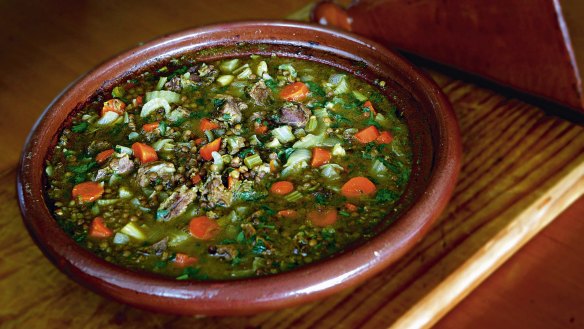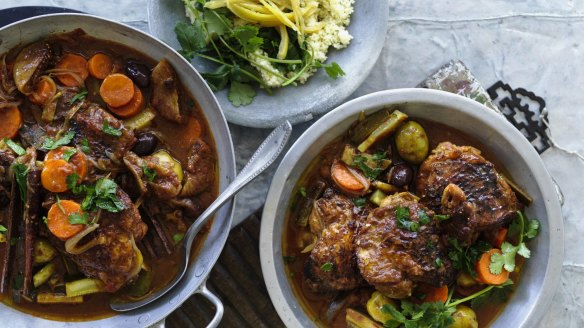How to cook with a terracotta pot

I have been given a terracotta cooking pot. What do I do with it? A. Moore
Terracotta means cooked earth. More than 10,000 years ago people worked out that if they cooked wet clay in a fire, it would harden and hold its shape if put over a flame.
Food could be cooked on it and if they moulded the clay into a vessel, it could hold liquids, allowing them to make stews and porridges.
Across the planet millions of people still cook on terracotta, from the ollas of Spain and comales of Mexico to the tagines of Northern Africa.
Terracotta is sturdy but brittle. It hates heat shock. A cold terracotta pot cannot go into a hot oven; nor can a hot terracotta dish go into a sinkful of cold water. And it will never work on an induction cooktop.
A cold terracotta pot cannot go into a hot oven; nor can a hot terracotta dish go into a sinkful of cold water.
However, it can sit over a low flame or electric hob with a diffuser underneath without cracking as long as the heat isn't turned up too high.
- Soak the unglazed part of the cooking pot in water for 10 to 15 minutes before use as terracotta is porous and will absorb the water, which will evaporate when heated. This helps cook the food with steam but also prevents the pot from cracking.
- To cook vegetable stews, slow-cooked meat dishes, lasagne or whole chickens, place the food into a cold oven then set the temperature.
The pot also makes an attractive serving dish on the table.
Wash in warm water and avoid using detergent as this can permeate the porous terracotta and give detergent odour to the food next cooked in the pot.

What is aged basmati rice? E. White
Anyone who has dropped a mobile phone in water knows that rice is hygroscopic, or water-absorbing. When rice is harvested, it needs to be dried to reduce the moisture level to between 12 and 14 per cent.
This makes it shelf-stable, allowing it to keep for a good year or so. If rice is dried further, to about nine per cent, it will last for several years.
This is ideal for a traditional farming society where a grain surplus is needed to get the population through lean years.
As the rice dries, its properties change. When cooked, the grains of aged rice do not clump together. During the drying and ageing process, the grains become darker and more aromatic.
Basmati is a Hindi word meaning aromatic, so aged basmati is markedly more aromatic than normal basmati.
Look for it in Indian and Asian grocers. Some rice aficionados prefer the brands sold in calico bags.
Letters
Responding to last week's column on kumquats, P. Hill wrote: "If you have a small kumquat tree in your yard, there will never be enough fruit to make a batch of marmalade. However, if you freeze ripe fruit and wait until you have enough for a batch, the thawed fruit will yield its tiny seeds easily." N. Triggs emailed in with this amusing missive: "Kumquat is also a term for unsuccessful public servant. Small, bitter and not quite a mandarin." Keep 'em coming.
Send your culinary conundrums and ingredient suggestions to brainfood@richardcornish.com.au or Twitter and Insta @foodcornish
Appears in these collections
- More:
- Food
- Brain food
